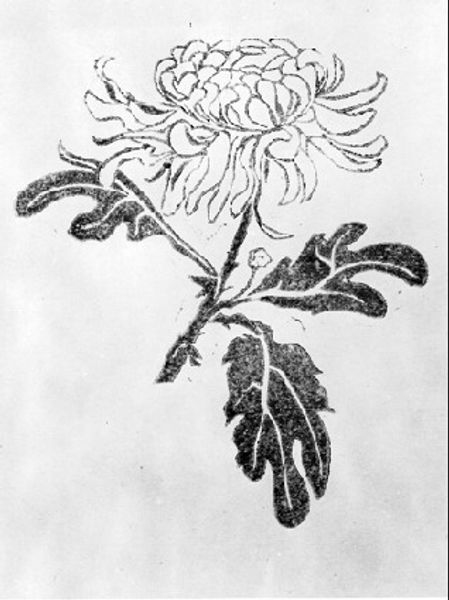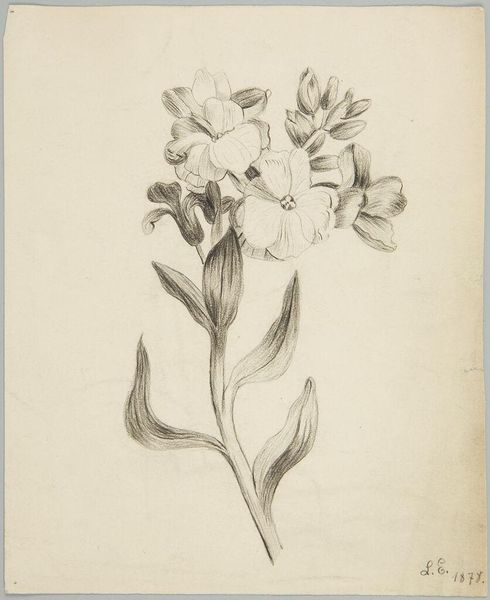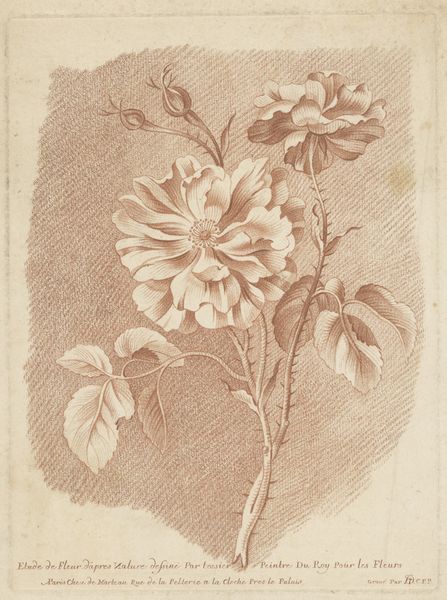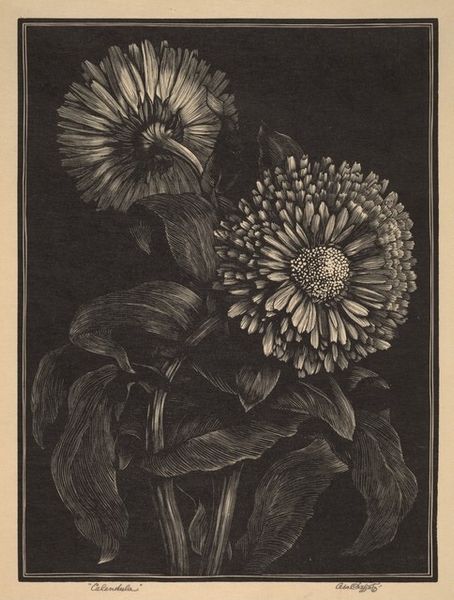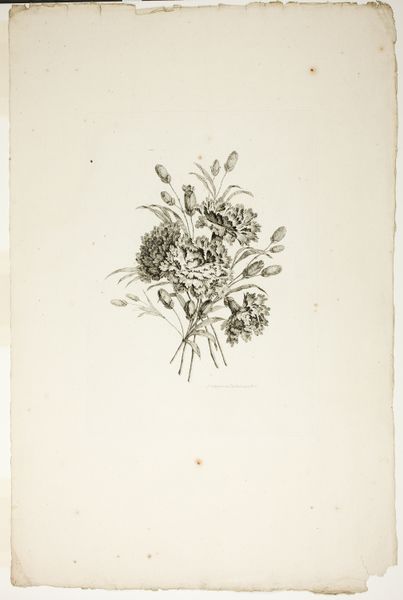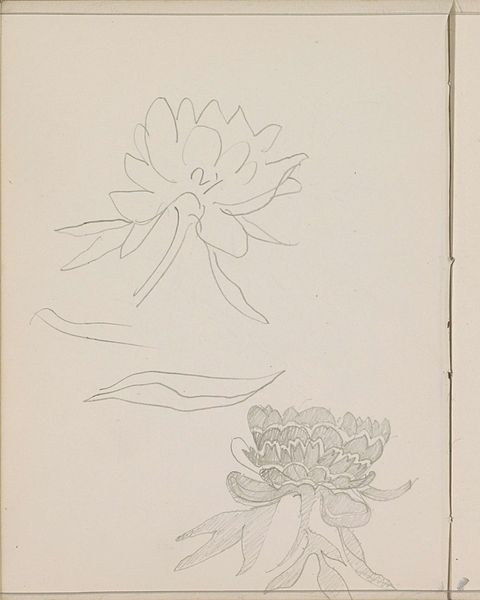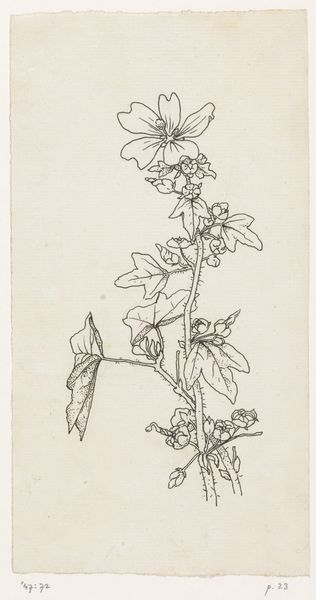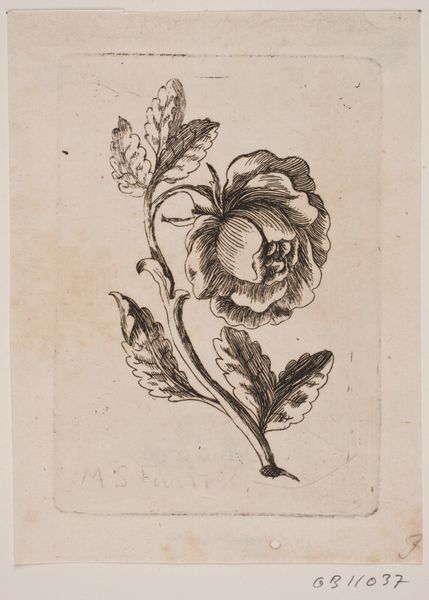
drawing, print, linocut
#
drawing
# print
#
linocut
#
etching
#
line
Dimensions: image: 16.4 x 13.5 cm (6 7/16 x 5 5/16 in.) sheet: 22.2 x 17.5 cm (8 3/4 x 6 7/8 in.)
Copyright: National Gallery of Art: CC0 1.0
Editor: So this is Escher’s "Chrysanthemum" from around 1916, a print made using woodcut or etching. It has a kind of quiet, sturdy presence, if that makes sense. How do you interpret this work from a formal perspective? Curator: Precisely. Observe the contrast in textures. The solid, almost block-like quality of the leaves plays against the delicacy of the flower’s petals, rendered with much finer lines. Do you notice how this textural contrast is crucial for our comprehension? Editor: Yes, I see it. The solid leaves really anchor the flower. Is there any further significance to Escher’s technique with this interplay between light and dark, solid and detailed? Curator: Indeed. Consider the strategic placement of lines. Escher utilizes the line, particularly its thickness and direction, not just to define shape but also to create a sense of depth and volume, primarily within the blossom itself. See how these properties are not illusions but physical traits of the medium. Editor: So the physical marks, the etched lines themselves, are what create the meaning here, instead of, say, what the flower represents? Curator: Absolutely. Form is not merely secondary; it is paramount. The carefully balanced asymmetry, the variation of line, the tactile quality of the print – these elements constitute the core of its aesthetic effect. It represents his departure into abstraction using observed form as his basis, long before he ventured into tessellations and mathematical concepts. Editor: It’s fascinating how focusing on the structure reveals so much. I definitely appreciate it more now, thinking about it in terms of composition and technique. Curator: The essence lies in the artistic method of organizing parts that are aesthetically pleasing in themselves and evoke certain feelings. We learn that the flower takes us elsewhere entirely.
Comments
No comments
Be the first to comment and join the conversation on the ultimate creative platform.
